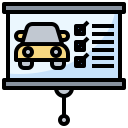
Basic Car Maintenance Tips for Beginners
Chosen theme: Basic Car Maintenance Tips for Beginners. Start your automotive journey with friendly, practical guidance that demystifies the essentials. From checking oil to reading tire wear, we’ll help you build confidence, save money, and keep your car happy. Ask questions, share your progress, and subscribe for weekly beginner-friendly tips!
Start Here: Build Confidence Before You Lift the Hood
Your owner’s manual is the single most important tool for beginners. It explains fluid types, service intervals, fuse locations, and warning lights specific to your model. Bookmark maintenance pages, highlight schedules, and keep it in your glovebox. Comment with your car model and we’ll help you find the most important sections to read first.
Work on a flat, well-lit surface, engage the parking brake, and use wheel chocks if you’ll be under the car. Wear gloves, eye protection, and never reach near moving belts or fans. Keep a flashlight, paper towels, and reusable rags nearby. Share your safety checklist, and subscribe for downloadable beginner checklists.
Begin with a tire pressure gauge, basic socket set, flathead and Phillips screwdrivers, OBD-II scanner, funnel, shop towels, work light, and nitrile gloves. You don’t need pro gear to start. Tell us what tools you already own, and we’ll suggest budget-friendly additions tailored to your needs and car type.
Engine Oil and Filters: The Lifeblood of Your Car
01
Warm the engine briefly, park level, then shut off and wait a minute. Pull the dipstick, wipe, reinsert, and read between the marks. Color alone isn’t everything—focus on level and schedule. If it’s consistently low, monitor weekly and look for leaks. Ask questions below about your readings and we’ll help interpret them.
02
Your manual lists the correct viscosity, like 5W-30. Synthetic often resists heat better and lasts longer. Choose a reputable filter brand that matches your engine. Avoid over-tightening filters or drain plugs. Share your climate and driving style, and we’ll suggest options that fit commuting, cold starts, or frequent short trips.
03
Gather supplies, lift safely with jack stands, drain oil into a pan, replace the crush washer, install a new filter lightly oiled at the gasket, then refill and check the dipstick. Recycle used oil responsibly. Post your first oil change story, and subscribe for printable torque specs and interval reminders.
Tires, Pressure, and Rotation: Grip, Safety, and Savings
Find the Right Tire Pressure
Use the driver’s door jamb sticker for the correct PSI, not the sidewall maximum. Check pressure monthly and before long trips, including the spare. A simple gauge can save fuel and prevent uneven wear. Tell us your current PSI and driving habits, and we’ll recommend a check schedule that suits you.
Tread Depth and Wear Patterns
Use a tread depth gauge or the penny test to spot low tread. Feathering or cupping points to alignment or suspension issues. Uneven edges often signal under- or over-inflation. Snap a photo of your tread wear and share it with us; we’ll help you decode the pattern and plan next steps.
Rotation and Balance Basics
Rotating tires every 5,000–8,000 miles evens wear and extends tire life. Front-to-back patterns vary with directional or staggered setups, so check your manual. If you feel vibration at highway speeds, ask about balancing. Subscribe for our easy rotation interval tracker and post your mileage to get personalized reminders.
Battery, Belts, and Essential Fluids
Battery Health Made Simple
Look for corrosion on terminals, clean gently with a baking soda solution, and ensure clamps are tight. If cranking is slow or lights dim, test voltage with a multimeter or visit an auto parts store for a free test. Share your battery age and symptoms, and we’ll suggest next steps before winter hits.
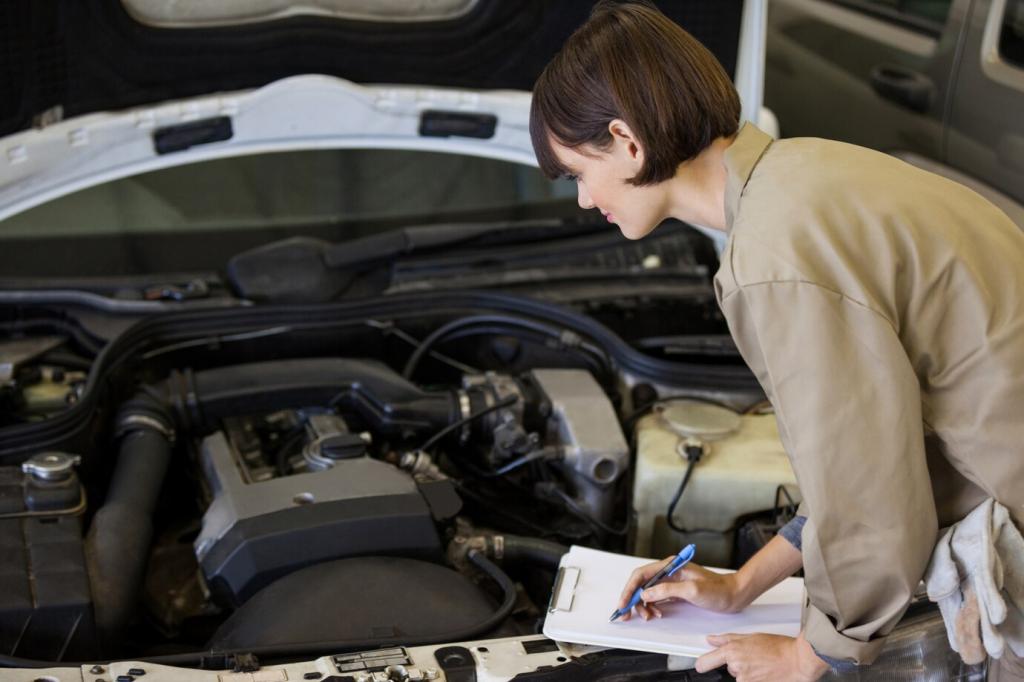

Coolant, Brake Fluid, and Power Steering
Check coolant level when the engine is cool, and never open a hot radiator. Brake fluid should be clear to light amber; dark fluid signals moisture contamination. Power steering level varies by system. Tell us your fluid colors and levels, and we’ll help you decide whether to top up or schedule a flush.

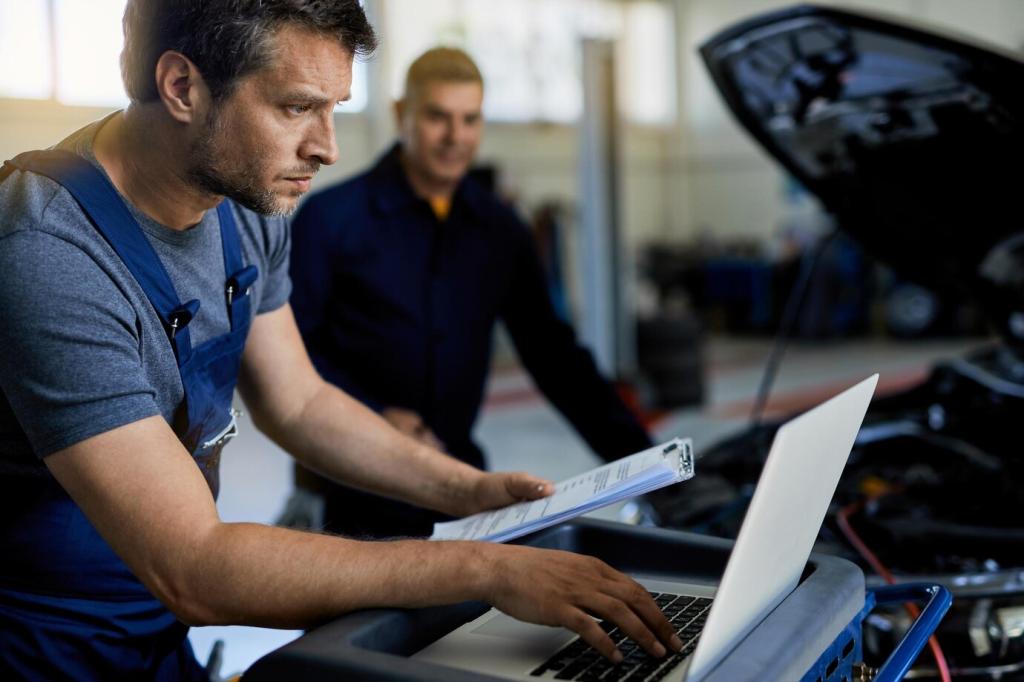
Brakes, Lights, and Wipers: See, Be Seen, and Stop Safely
Squealing often means wear indicators are contacting the rotor. Grinding suggests pads are gone and rotors may be damaged. If the pedal feels soft or pulls to one side, inspect immediately. Share your brake symptoms and recent service history, and we’ll help you decide if it’s a DIY job or shop visit.
Brakes, Lights, and Wipers: See, Be Seen, and Stop Safely
Check lights monthly with a friend or reflective surface. Clean hazy lenses with a restoration kit for better brightness. Replace bulbs in pairs for even illumination. Tell us your vehicle year and bulb type, and we’ll link to compatible replacements and show you a quick, beginner-friendly swap technique.
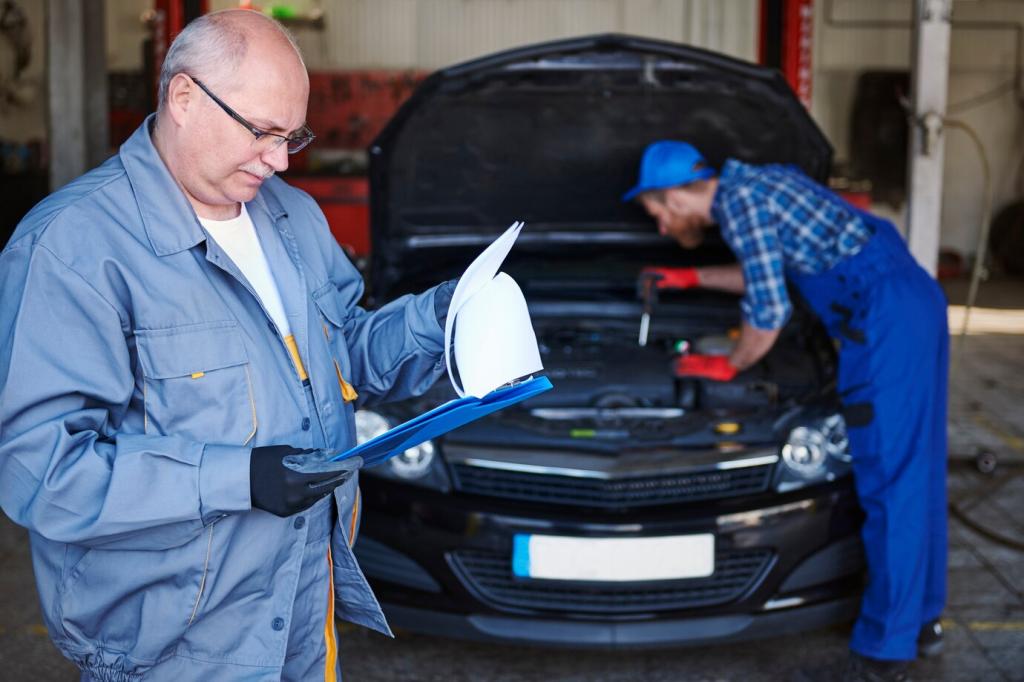
Keep a simple notebook or notes app with dates, mileage, and what you changed. Include oil, filters, wipers, and tires. Set calendar reminders for seasonal checks. Share your mileage and driving style, and we’ll help build a beginner schedule you can actually follow without stress or guesswork.
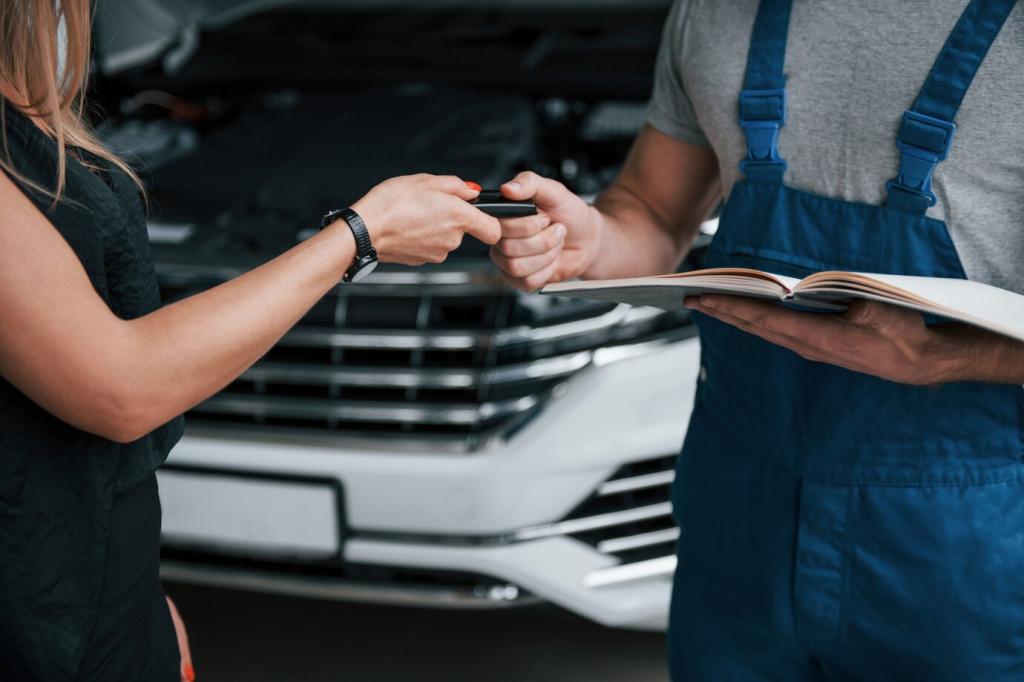
Pack jumper cables, a compact air compressor, tire plug kit, reflective triangle, flashlight, gloves, poncho, water, and a first-aid kit. Add a portable battery booster if possible. Post a photo of your kit, and we’ll suggest upgrades tailored to city commuting, long highway trips, or winter conditions.

Locate jack points, practice loosening lug nuts before lifting, and rehearse the entire process safely in your driveway. If you have a repair kit instead of a spare, learn the steps now. Tell us your wheel size and spare type, and subscribe for a quick-reference guide you can store in your trunk.
Basic Diagnostics and When to Call a Pro
A flashing check engine light usually indicates a misfire needing urgent attention, while a steady light can often wait for basic checks. ABS, airbag, and battery icons each mean different systems. Share the light you’re seeing and any recent symptoms, and we’ll help you plan a safe, calm next step.
Basic Diagnostics and When to Call a Pro
Plug the scanner under the dashboard, read codes, and note freeze-frame data. Search reliable sources for code meanings, then inspect basics like gas cap seals or vacuum hoses. Post your code and car year, and we’ll suggest beginner-friendly checks before you spend money on parts you might not need.


